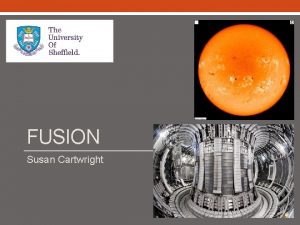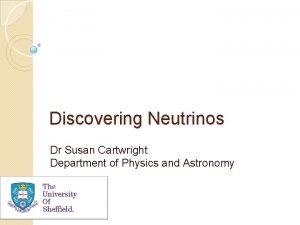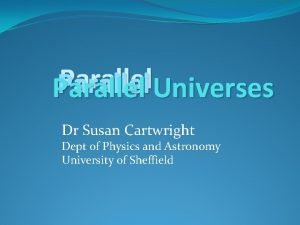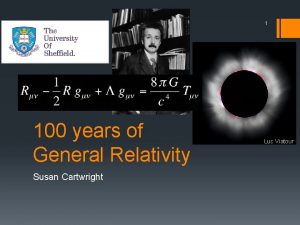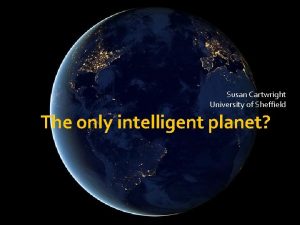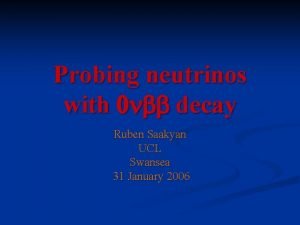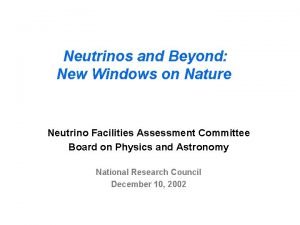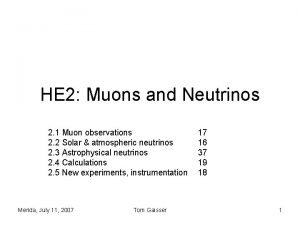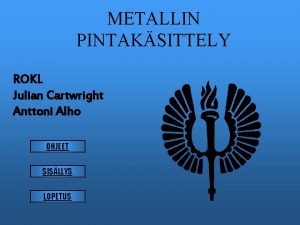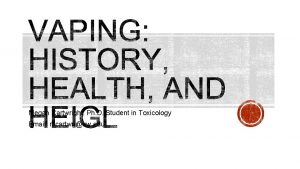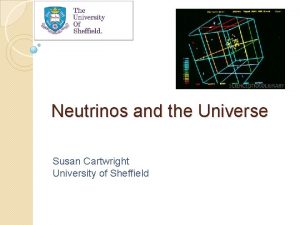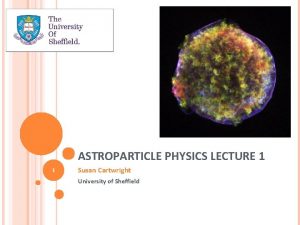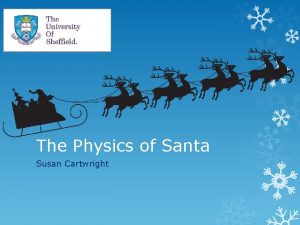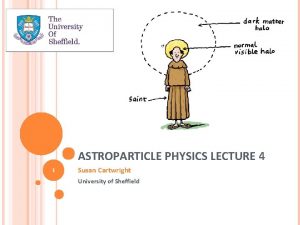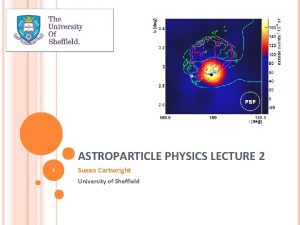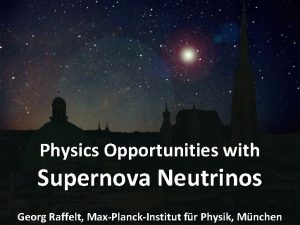Discovering Neutrinos Dr Susan Cartwright Department of Physics









- Slides: 9

Discovering Neutrinos Dr Susan Cartwright Department of Physics and Astronomy

Discovering neutrinos �Routes to scientific discovery: ● Accident! ● You find something unexpected in your data ● For example, gamma-ray bursts (discovered by satellites designed to look for clandestine nuclear tests) ● Prediction ● There is a clear-cut theoretical prediction that your experiment is designed to test ● For example, discovery of the W, Z and Higgs at CERN ● Anomaly ● Something in the data does not agree with theoretical expectations

The idea of neutrinos �Neutrinos have no charge ● very little mass ● very weak interactions with everything else ● �Why ● would anyone suspect their existence? radioactive β decay X → X' + e− + ν e should have E = Δmc 2 ● obviously doesn’t! Wolfgang Pauli suggested emission of an additional particle (1930) Ellis & Wooster, 1927

Neutrinos in theory �Fermi’s theory of weak force (1933) assumed the existence of the neutrino, but nobody had detected one directly ● Pauli worried that he might have postulated a particle which was literally impossible to detect �Neutrinos interact so weakly that they are very hard to see ● you need a very intense source to make up for the extremely small chance of any given neutrino interacting

Discovering neutrinos �Enter Fred Reines and Clyde Cowan (1950 s) ● Plan A: use a bomb! ● lots of neutrinos from fission fragments ● detect via ν e + p → e+ + n detect γ rays produced when it annihilates with e− ● late γ rays emitted when it is captured by a nucleus problem—need your detector to survive the blast. . .

Discovering neutrinos �Enter Fred Reines and Clyde Cowan (1950 s) ● Plan B: use a nuclear reactor ● lots of neutrinos from fission fragments ● detect via ν e + p → e+ + n detect γ rays produced when it annihilates with e− ● late γ rays emitted when it is captured by a nucleus detector survives. . . can repeat experiment

The results �They observed a signal of 2. 88± 0. 22 counts per hour �Is this real? ● It agrees with the expectations of Fermi’s theory to within a factor of 2 ● The first signal consists of two γ-rays arriving at the same time (from e+e− γγ) ● The second signal went away when the cadmium was removed (i. e. it is from a neutron) ● The rate is halved when H 2 O is partially replaced by D 2 O (reducing the number of free protons)

Conclusion �It took 25 years to convert the neutrino from a theoretical postulate to a detectable particle ● This is because neutrinos interact extremely weakly, not because they are rare—the flux of solar neutrinos at the Earth is 65 billion per square cm per second! �The discovery required ground-breaking experimental techniques ● This detector was enormous by the standards of the 1950 s �The team made many cross-checks before announcing their result ● “Extraordinary claims require extraordinary evidence”

Neutrino experiments still measure the interaction that Reines and Cowan used—but they’ve got a bit bigger since 1953…
